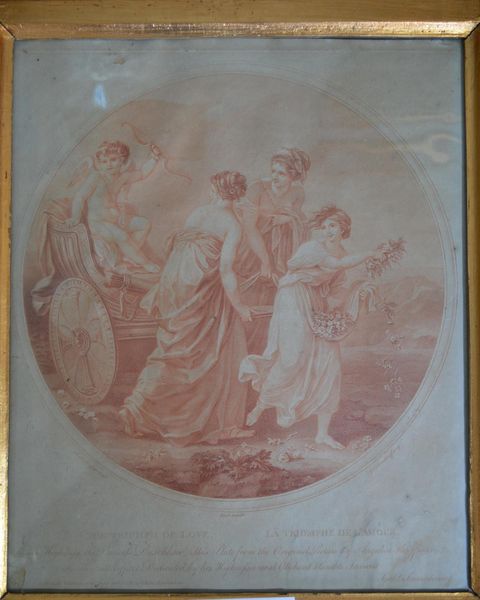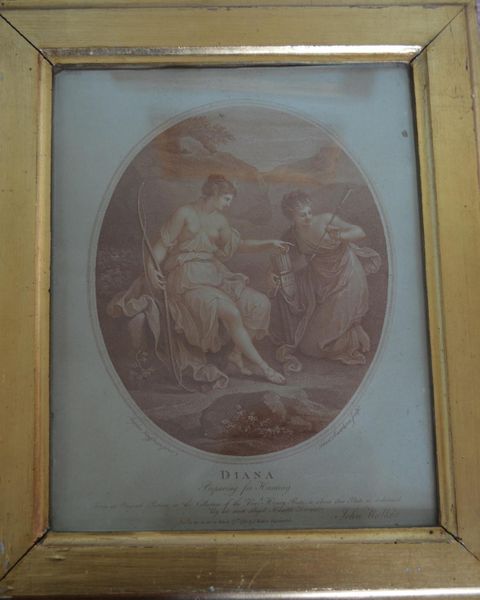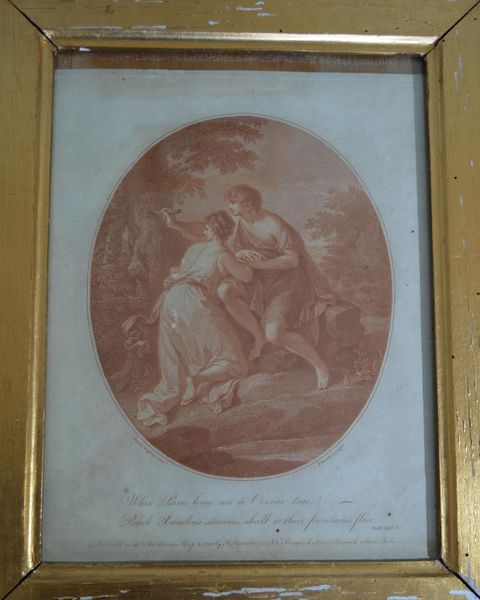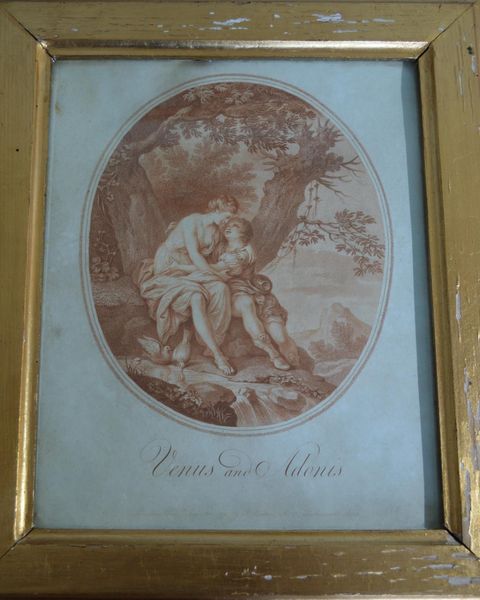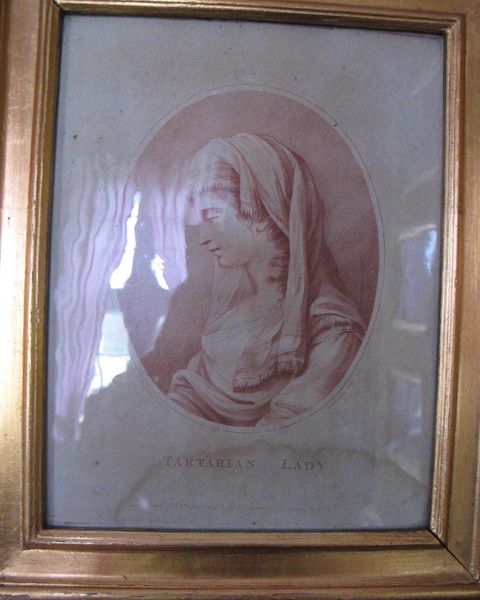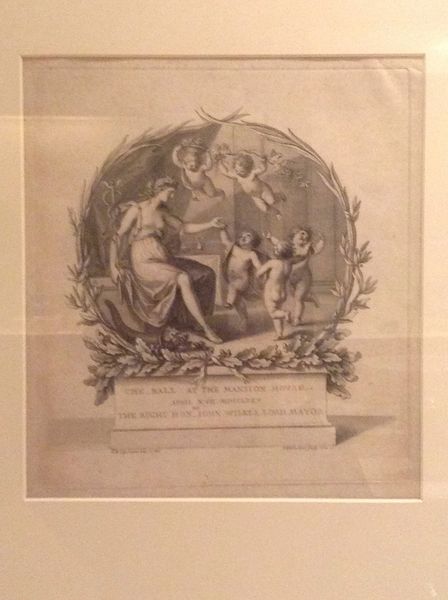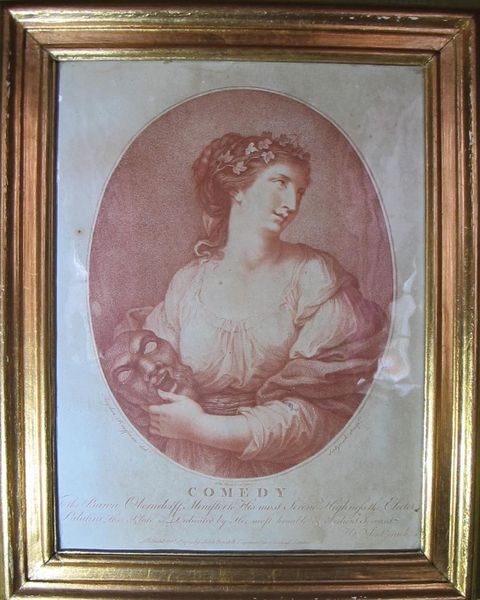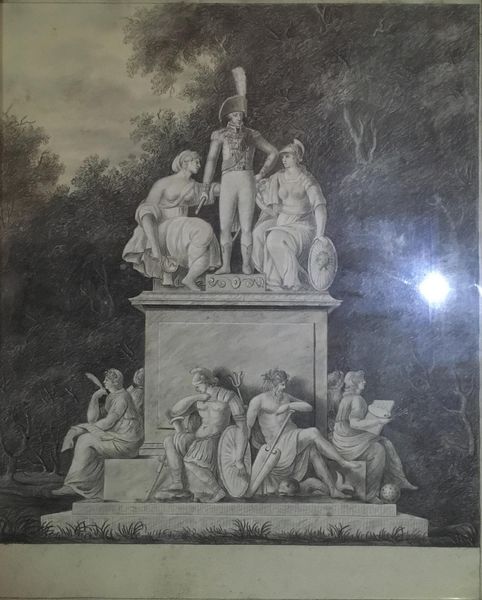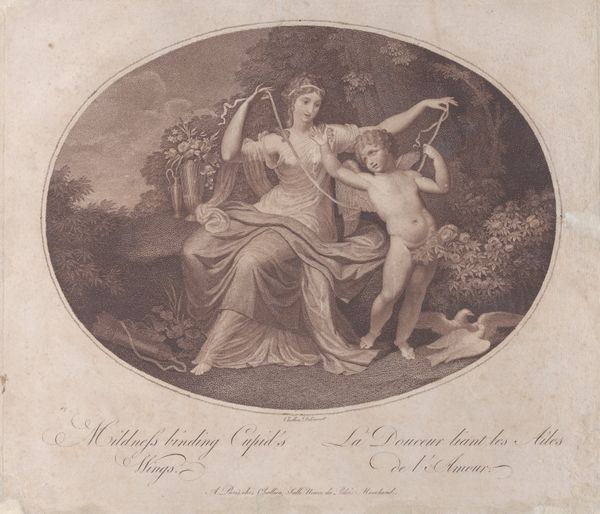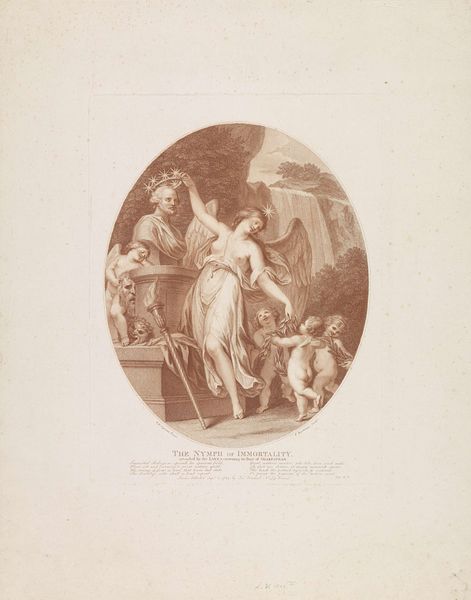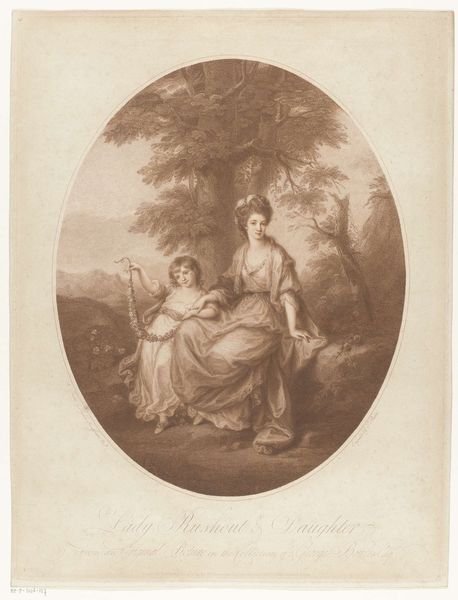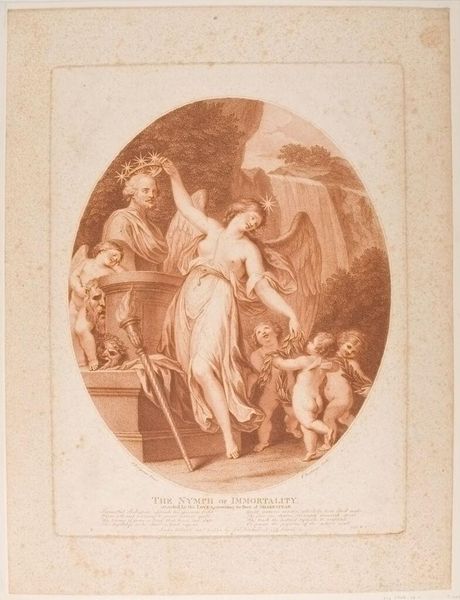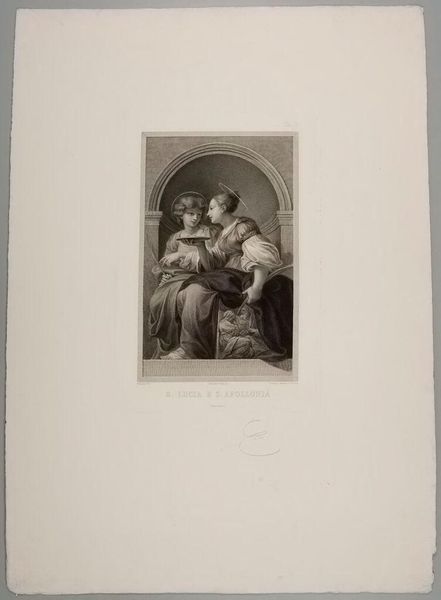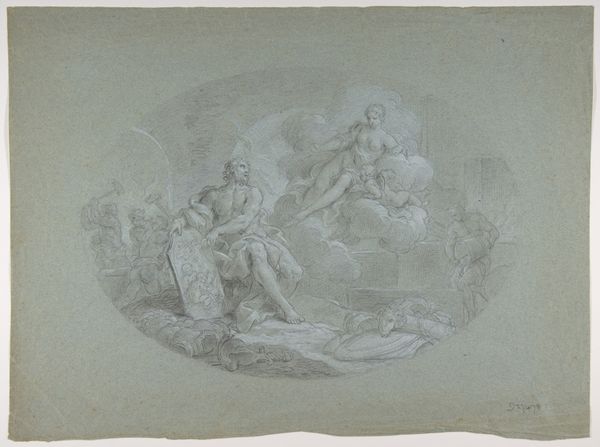
print, engraving
#
neoclacissism
#
allegory
# print
#
figuration
#
line
#
engraving
Dimensions: 369 mm (height) x 305 mm (width) (netto)
Curator: Ah, this print, "An Offering to Love," crafted in 1778 by Gavriil Skorodumov, offers us a window into the sentimental classicism popular at the time. Its home is now here at the SMK, Statens Museum for Kunst. Editor: My first impression is that it possesses an airy grace, almost ephemeral. The limited tonal range—that rosy monochrome— lends the scene a delicate, dreamlike quality. The composition, confined within the circle, feels deliberately contained. Curator: Indeed. It's an engraving, so that limited tonal range would have been deliberate, requiring great skill. Notice how Skorodumov echoes Neoclassical aesthetics then in vogue through depictions of women performing ritual acts; you see an engagement with virtue, sentiment, and idealized forms. These were potent images employed by elites during periods of shifting political terrains, projecting images of harmony and morality in the face of perceived social upheavals. Editor: Agreed. Technically speaking, the engraving showcases the artist's deft use of line to define form and create shading. It's a very controlled, precise execution, giving a real sense of depth despite being almost entirely linear. The postures and draping are reminiscent of classical sculpture. There's something carefully staged about it all. Curator: The image borrows significantly from iconography of ancient Greek and Roman traditions, a conscious nod toward a perceived Golden Age and deployed by institutions and academics to elevate culture in the broader collective imagination. Prints like this were key to distributing such ideas among growing audiences for art and design. Didactic engravings had an incredible capacity to shape morals and conduct through familiar visual metaphors, thus providing the growing bourgeois with instructions in appropriate attitudes. Editor: Yes, I see that now. So that seemingly contained composition reflects those tight societal structures that the elites of the day sought to maintain by way of propaganda—visual signposts directing individuals toward an appropriate path. Even in a work this visually serene, you can detect undertones of prescribed behaviour and class maintenance! Curator: Absolutely. It makes you ponder the impact of supposedly beautiful artworks upon individuals that lived with those structures. Editor: It's astounding how close examination of color, composition and theme leads us towards these discussions of its historical importance and institutionalization of meaning. Thank you!
Comments
No comments
Be the first to comment and join the conversation on the ultimate creative platform.
